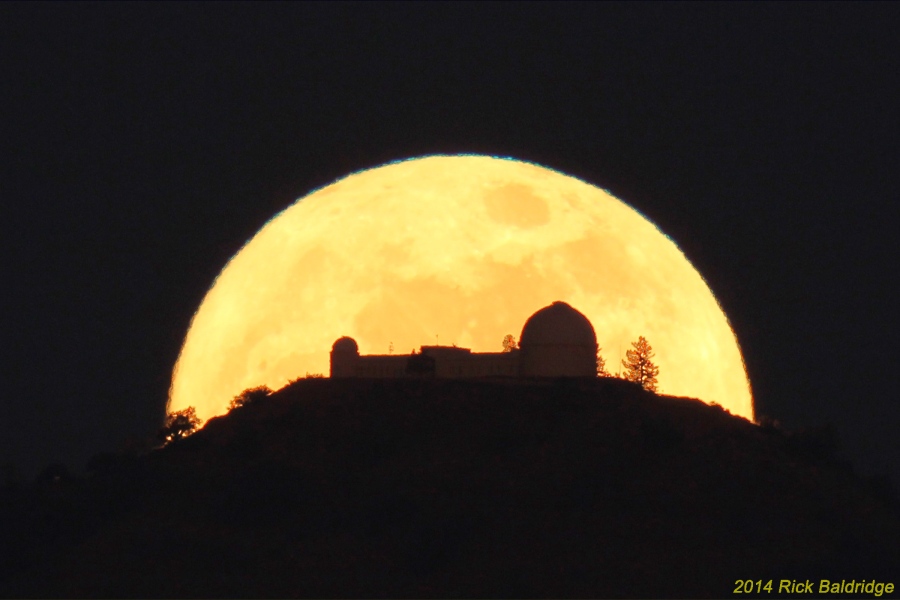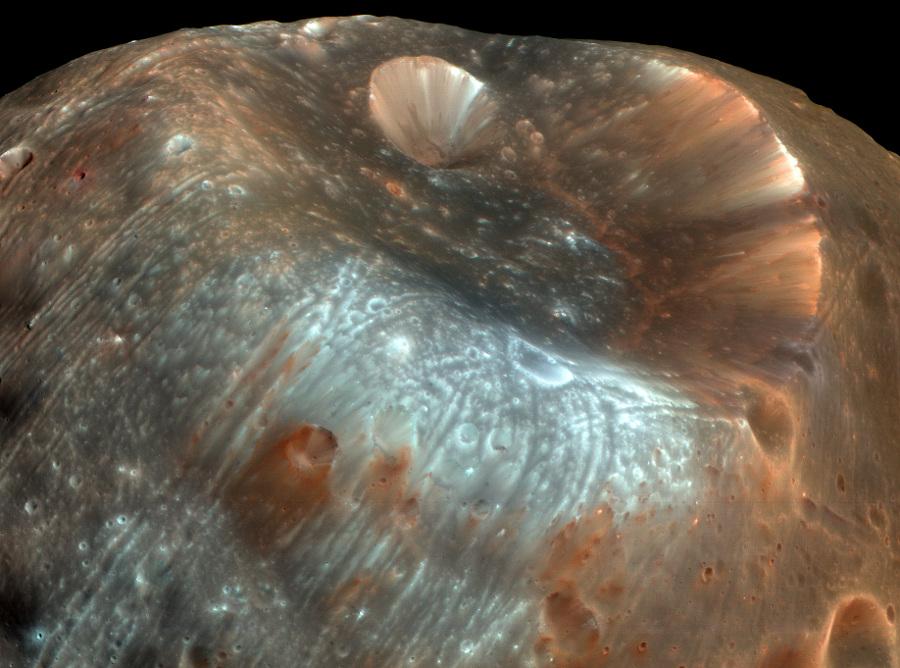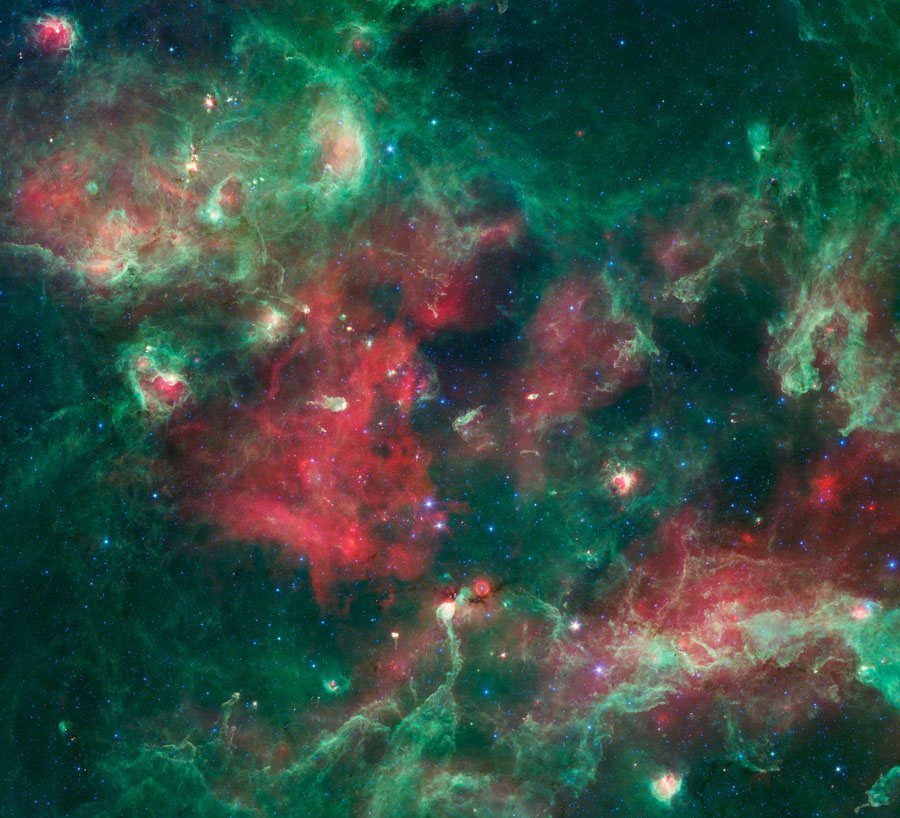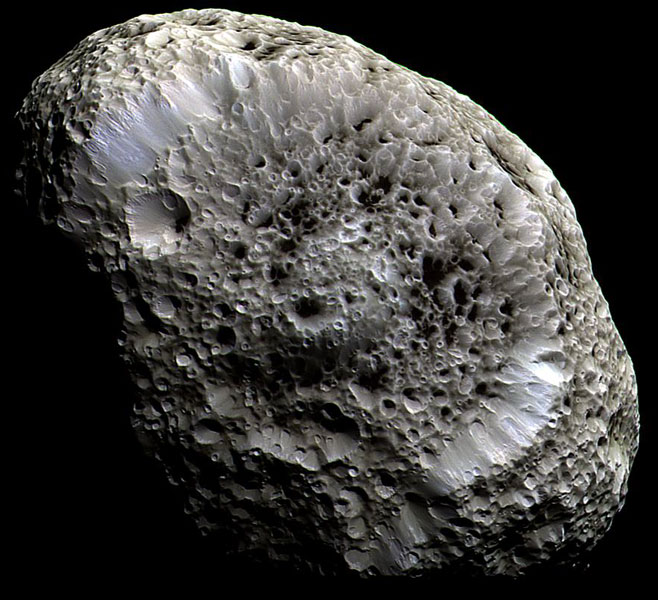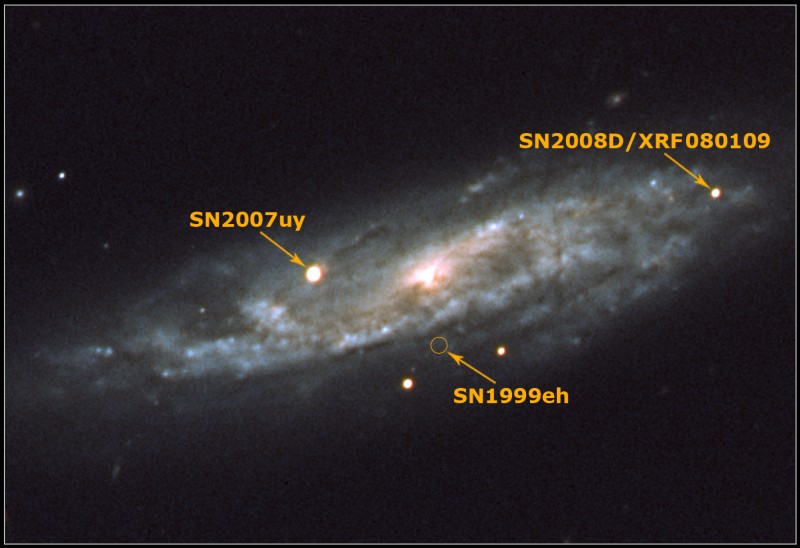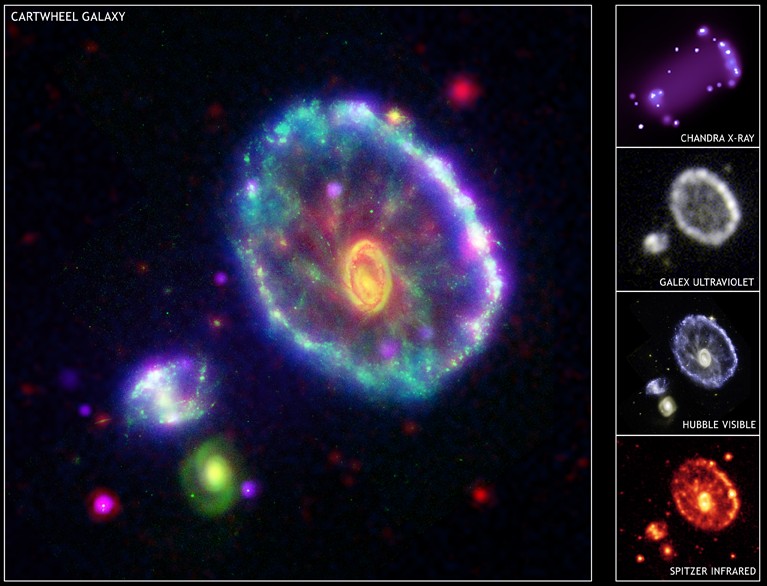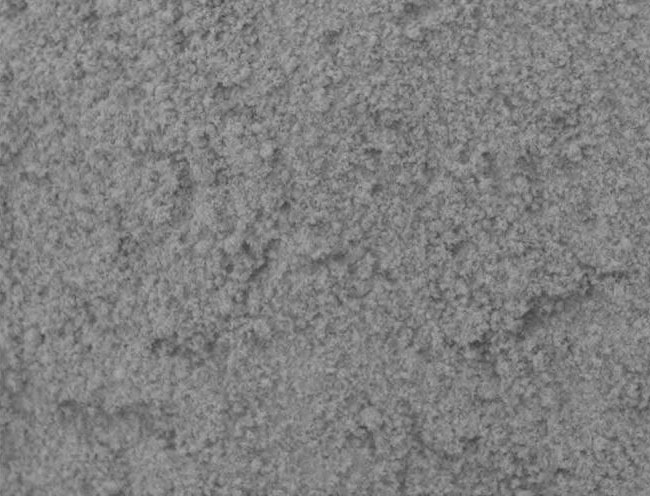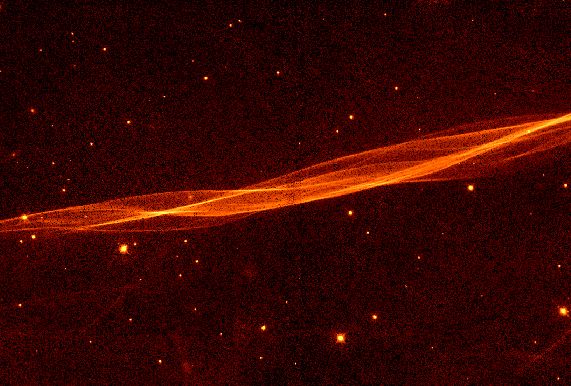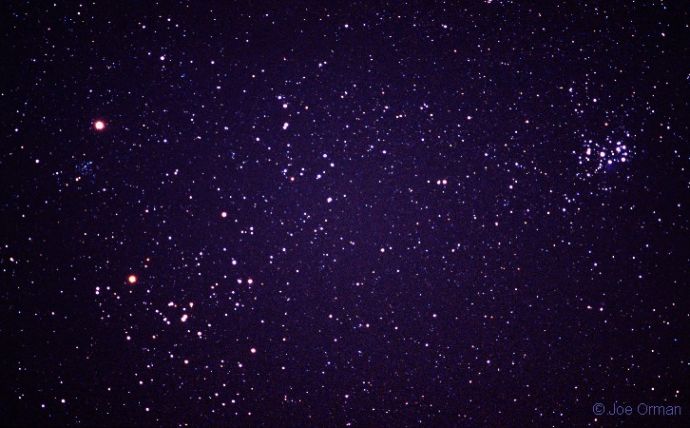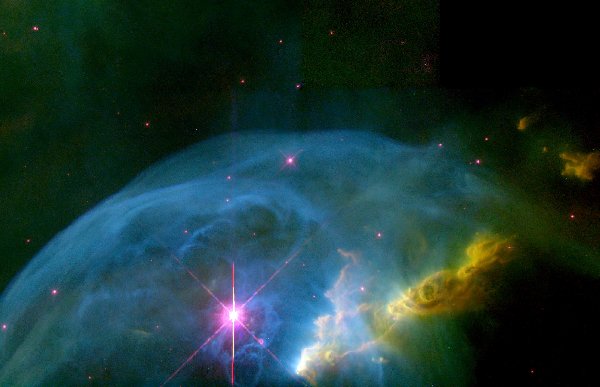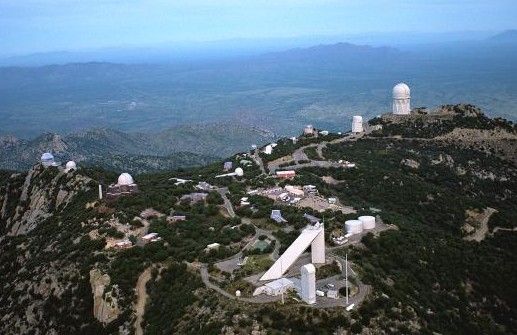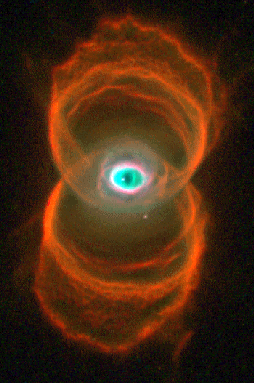| << Previous | Index | Next >> |
2015
2014 This big, bright, beautiful Full Moon rose over Lick Observatory Wednesday night. Traditionally a full moon in January might be called the Wolf Moon. But this moon reached its full phase on January 16, 4:54 UT, within about 2 hours of apogee, the most distant point in its elliptical orbit around planet Earth. That also makes it the smallest full moon of 2014. Of course the difference in apparent size between the largest and smallest full moons is hard to see, because the difference in distance between lunar apogee and perigee, or closest point in the Moon's orbit, is only about 50,000 kilometers, while the Moon's average distance is around 385,000 kilometers. Though not by much, this apogee's full moon was also the smallest full moon of the last 1,000 years. It will keep that distinction until a slightly smaller full moon occurs close to apogee in 2154.
2013 Stickney Crater, the largest crater on the martian moon Phobos, is named for Chloe Angeline Stickney Hall, mathematician and wife of astronomer Asaph Hall. Asaph Hall discovered both the Red Planet's moons in 1877. Over 9 kilometers across, Stickney is nearly half the diameter of Phobos itself, so large that the impact that blasted out the crater likely came close to shattering the tiny moon. This stunning, enhanced-color image of Stickney and surroundings was recorded by the HiRISE camera onboard the Mars Reconnaissance Orbiter as it passed within some six thousand kilometers of Phobos in March of 2008. Even though the surface gravity of asteroid-like Phobos is less than 1/1000th Earth's gravity, streaks suggest loose material slid down inside the crater walls over time. Light bluish regions near the crater's rim could indicate a relatively freshly exposed surface. The origin of the curious grooves along the surface is mysterious but may be related to the crater-forming impact.
2012 How do stars form? To help study this complex issue, astronomers took a deep infrared image of Cygnus X, the largest known star forming region in the entire Milky Way Galaxy. The above recently-released image was taken in 2009 by the orbiting Spitzer Space Telescope and digitally translated into colors humans can see, with the hottest regions colored the most blue. Visible are large bubbles of hot gas inflated by the winds of massive stars soon after they form. Current models posit that these expanding bubbles sweep up gas and sometimes even collide, frequently creating regions dense enough to gravitationally collapse into yet more stars. The star factory Cygnus-X spans over 600 light years, contains over a million times the mass of our Sun, and shines prominently on wide angle infrared panoramas of the night sky. Cygnus X lies 4,500 light years away towards the constellation of the Swan (Cygnus). In a few million years, calm will likely be restored and a large open cluster of stars will remain -- which itself will disperse over the next 100 million years.
2011 How does your galaxy grow? Quite contrary to a typical galaxy, this one needs water to flourish. Pictured above as it appears at the Paleaku Peace Gardens Sanctuary in Kona, Hawaii, USA, a meticulously planned garden spanning about 30 meters provides a relatively accurate map of our Milky Way Galaxy. Different plants depict stars, globular clusters, and even nebulas. Many bright stars visible in Earth's night sky are depicted on leaves surrounding the marked location of the Sun. Plant rows were placed to represent arms of our Galaxy, including the Sun's Orion Arm, the impressive Sagittarius Arm, and the little discussed Norma Arm. A small bar runs through our Galaxy's center, while a fountain has been built to represent the central black hole. What a stellar use of space!
2010 What's happened to the Sun? The Moon moved to partly block the Sun for a few minutes last week as a partial solar eclipse became momentarily visible across part of planet Earth. In the above single exposure image, meticulous planning enabled careful photographers to capture the partially eclipsed Sun well posed just above the ancient ruins of the Temple of Poseidon in Sounio, Greece. Unexpectedly, clouds covered the top of the Sun, while a flying bird was caught in flight just to the right of the eclipse. At its fullest extent from some locations, the Moon was seen to cover the entire middle of the Sun, leaving the surrounding ring of fire of an annular solar eclipse. The next solar eclipse -- a total eclipse of the Sun -- will occur on 2010 July 11 but be visible only from a thin swath of the southern Pacific Ocean and near the very southern tip of South America.
2009 What lies at the bottom of Hyperion's strange craters? Nobody knows. To help find out, the robot Cassini spacecraft now orbiting Saturn swooped past the sponge-textured moon in late 2005 and took an image of unprecedented detail. That image, shown above in false color, shows a remarkable world strewn with strange craters and a generally odd surface. The slight differences in color likely show differences in surface composition. At the bottom of most craters lies some type of unknown dark material. Inspection of the image shows bright features indicating that the dark material might be only tens of meters thick in some places. Hyperion is about 250 kilometers across, rotates chaotically, and has a density so low that it might house a vast system of caverns inside.
2008
2007 After a remarkable performance in the northern hemisphere, the brightest comet in decades is now showing off in the south. Recorded during evening twilight on January 17, this view features the bright coma and gorgeous, sweeping tail of Comet McNaught (c/2006 P1) over Lake Horowhenua in Levin, a small town on New Zealand's North Island. Astronomer Noel Munford reports that the five second long digital camera exposure comes close to capturing the visual appearance of the comet in a sky coloured by smoke from distant brush fires in Australia. Discovered last summer by R. H. McNaught (Siding Spring Survey), the comet grew impressively bright in early January and has even been sighted in full daylight. In the coming days Comet McNaught will continue to move south, for now a spectacle in southern skies as it heads for the outer solar system.
2006 By chance, a collision of two galaxies has created a surprisingly recognizable shape on a cosmic scale - The Cartwheel Galaxy. The Cartwheel is part of a group of galaxies about 400 million light years away in the constellation Sculptor (two smaller galaxies in the group are visible below and left). Its rim is an immense ring-like structure over 100,000 light years in diameter, composed of star forming regions filled with extremely bright, massive stars. When galaxies collide they pass through each other, their individual stars do not come into contact. However, this ring-like shape is the result of gravitational disruption caused by a smaller galaxy passing through a large one, compressing the interstellar gas and dust and causing a star formation wave to move out like a ripple across the surface of a pond. This false-color composite image of the Cartwheel Galaxy is from space-based observatories. The Chandra X-ray Observatory data is in purple, the Galaxy Evolution Explorer ultraviolet view is in blue, the Hubble Space Telescope visible light picture is in green and the Spitzer Space Telescope infrared image is in red.
2005 A satellite galaxy of the Milky Way, the Small Magellanic Cloud (SMC) is a wonder of the southern sky, a mere 210,000 light-years distant in the constellation Tucana. Found among the SMC's clusters and nebulae NGC 346 is a star forming region about 200 light-years across, pictured above by the Hubble Space Telescope. Exploring NGC 346, astronomers have identified a population of embryonic stars strung along the dark, intersecting dust lanes visible here on the right. Still collapsing within their natal clouds, the stellar infants' light is reddened by the intervening dust. A small, irregular galaxy, the SMC itself represents a type of galaxy more common in the early Universe. But these small galaxies are thought to be a building blocks for the larger galaxies present today. Within the SMC, stellar nurseries like NGC 346 are also thought to be similar to those found in the early Universe.
2004 Make your background the closest image of Mars yet. The Spirit Rover currently rolling on Mars has taken the highest resolution image to date of another planet. The above black and white image spans only about 1.5 centimeters across, with details smaller than 1/10 of a millimeter visible. A microscope attached to the Spirit rover's instrument arm took the image. Up close, the Martian soil appears to planetary geologists to have clumping properties similar to cocoa powder. As more images come in and as the Spirit Rover continues to explore Mars, more information about the unusual floor of Gusev Crater are likely to emerge.
2003 Subtle and delicate in appearance, these are filaments of shocked interstellar gas -- part of the expanding blast wave from a violent stellar explosion. Recorded in November 1997 with the Wide Field and Planetary Camera 2 on board the Hubble Space Telescope, the picture is a closeup of a supernova remnant known as the Cygnus Loop. The nearly edge-on view shows a small portion of the immense shock front moving toward the top of the frame at about 170 kilometers per second while glowing in light emitted by atoms of excited hydrogen gas. Not just another pretty picture, this particular image has provided some dramatic scientific results. In 1999, researchers used it to substantially revise downward widely accepted estimates of distance and age for this classic supernova remnant. Now determined to lie only 1,440 light-years away, the Cygnus Loop is thought to have been expanding for 5 - 10 thousand years.
2002 Last November, while skygazing toward the constellation Taurus, astrophotographer Joe Orman arranged this time exposure to include the lovely Hyades and Pleiades star clusters in the field of his telephoto lens. A distance of 400 light-years for the close-knit Pleiades and 150 light-years for the V-shaped Hyades puts these clusters in the general galactic neighborhood of the Sun. Punctuating the Hyades' appearance, bright yellow Aldebaran, 60 light-years away, is not actually a member of the cluster, but it is Taurus' brightest star. Above Aldebaran a yellower, even brighter Saturn is is seen about 1.2 light-hours from our fair planet. Last and least massive, one of the faint specks below Aldebaran is main-belt asteroid Vesta, a mere 13 light-minutes away. Still cruising through Taurus, Vesta is steadily approaching a close alignment or conjunction with Saturn on March 19. Need a program to follow the players?
2001 The first and only total lunar eclipse for the year 2001 occured on the evening of January 9/10 as the full Moon glided through Earth's shadow. Unlike a total solar eclipse, a total lunar eclipse is visible for anyone on the night side of the planet during the event. The night side for this geocentric celestial event included Europe, Asia, and Africa where the Moon could be seen immersed in the umbra or dark portion of Earth's shadow for about 62 minutes as it passed just north of the shadow's center. This dramatic telescopic photo of the eclipsed Moon was made near Ankara, Turkey close to the time of midpoint of the total phase. The fact that the northern (top) portion of the eclipsed Moon is clearly brighter, even near mid-totality, demonstrates that Earth's shadow is not uniformly dark.
2000 What created this huge space bubble? A massive star that is not only bright and blue, but also emitting a fast stellar wind of ionized gas. The Bubble Nebula is actually the smallest of three bubbles surrounding massive star BD+602522, and part of gigantic bubble network S162 created with the help of other massive stars. As fast moving gas expands off BD+602522, it pushes surrounding sparse gas into a shell. The energetic starlight then ionizes the shell, causing it to glow. The above picture taken with the Hubble Space Telescope and released last week shows many details of the Bubble Nebula never seen before and many still not understood. The nebula, also known as NGC 7635, is about six light-years across and visible with a small telescope towards the constellation of Cassiopeia.
1999 At the top of Kitt Peak Mountain near Tucson, Arizona lies one of the world's great collections of telescopes. As pictured, in the dome at the far left lies the 3.5-meter WIYN Telescope, famous recently for tracking distant supernovae. The next major dome to the right houses a 36-inch telescope now used mostly for imaging. Farther to the right beside a thin tower is a 2.1-meter Telescope used currently for imaging and spectroscopy. The unusual triangular building houses the McMath-Pierce Solar Telescope. In front of it lies the Vacuum Tower Telescope while in back are the Burrell-Schmidt Telescope and the SARA 0.9-meter automated telescope. At the far right lies one of the world's largest telescopes: the 4-meter Mayall Reflector. Kitt Peak recently celebrated its 40th year during which it helped establish the existence of dark matter and the first gravitational lens. Kitt Peak National Observatory is part of the United States' National Optical Astronomical Observatories and is operated under agreement with the National Science Foundation.
1998 NASA's robot spacecraft Voyager 2 made this image of Saturn as it began to explore the Saturn system in 1981. Saturn's famous rings are visible along with two of its moons, Rhea and Dione which appear as faint dots on the right and lower right part of the picture. Astronomers believe that Saturn's moons play a fundamental role in sculpting its elaborate ring system. A robot spacecraft named Cassini was launched last October and is expected to rendezvous with the giant gas planet in 2004.
1997
1996 The sands of time are running out for the central star of this hourglass-shaped planetary nebula. With its nuclear fuel exhausted, this brief, spectacular, closing phase of a Sun-like star's life occurs as its outer layers are ejected - its core becoming a cooling, fading White Dwarf. Astronomers have recently used the Hubble Space Telescope (HST) to make a series of images of planetary nebulae, including the one above. Here, delicate rings of colorful glowing gas (nitrogen-red, hydrogen-green, and oxygen-blue) outline the tenuous walls of the "hourglass". The unprecedented sharpness of the HST images has revealed surprising details of the nebula ejection process and may help resolve the outstanding mystery of the variety of complex shapes and symmetries of planetary nebulae.
| << Previous | Index | Next >> |

